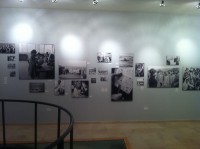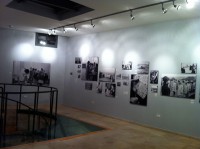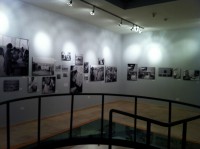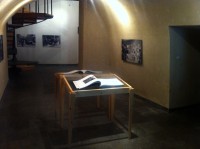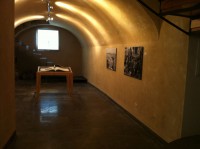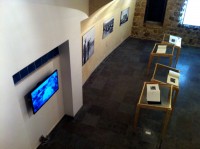The Long Journey (2013)
UNRWA Audio Visual Archive for Palestine Refugees
curation and production
First exhibited at Al-Mamaal Foundation in Jerusalem between 28/12/2013 - 28/1/2014
The exhibition looks at around 5000 photographs of the UNRWA archive that have been recently digitised. showing around 500 of them.
----
The questions below are questions yet to be answered. They are questions that hovered over the exhibition I write of below, they functioned as musings rather than resolving them through the exhibition.
How do we look at an archive in the context of catastrophe?
How can we make an archive alive and public?
But does this archive, perhaps because it is a photographic archive, normalise the catastrophe?
UNRWA approached me last July about curating a selection of the massive, recently digitised archive that documents their activities in Palestinian refugee camps from 1948 to the present day. Initially, I hesitated. I was aware that this was a project that came with certain conditions - after all, it is not just any archive, but an institutional copyrighted homogenised archive of a catastrophic event. It should and must belong to the public.
This archive is complicated, in several senses - perhaps complexity is the nature of archives. The existence of this one is tied not only to the original, destructive event, but also to the continuation of this destruction. The archive is sustained by the destruction and, simultaneously, plays a part in sustaining it. And so I was aware that this exhibition is not only meant to state the obvious, namely that this catastrophe needs to end, but also that the catastrophe continues and therefore the unstated; the institutions’ existence and it’s necessary support is justified by this exhibition.
Creating an exhibition from an archive necessitated thinking the anti archive. We had to ignore the rigid institutional categories of the archive in order to open them up. Originally, the photographs were categorized according to the services UNRWA gave to the refugees: health, education, vocational training, food and so on. These original categories confined each photograph to one limited narrative, keeping them within the walls and framework of the institution. For the exhibition, we removed them from this context, extracting new categories tied to the poetics and aesthetics of the images rather than simply the subjects depicted in the images.
There is always danger in documenting a present tragedy. The original captions for the archived photographs were descriptive and documentary; they therefore confined the photos and the depicted subjects to the realm of the documentary. To use the words of Godard in his 2004 film Notre Musique, ‘In 1948 the Israelites walked on water to the promised land. The Palestinians walked on water to drown. Shot and counter-shot. Shot and counter-shot. The Jewish people rejoin fiction; the Palestinian people, documentary.’ The use of the documentary, as an aesthetic strategy, by and for the Palestinian people forces us into a passive role. Events happen to us: we are not the authors of history but the subjects and victims of its repercussions. Meanwhile, the Israelis have employed the aesthetics of fiction as a strategy to construct a powerful narrative and to create, through systematic state violence, a nation state and a globally recognised reality.
The captions that originally accompanied the photographs posited those images in the realm of the documentary, rather than the fictive. In an attempt not only to open the archive’s fictive possibilities, but also to bring those photos and their subjects into the immediate present, we deleted everything documentary in the captions, and left only the remnants of categorical descriptions. This simple alteration by deletion fissured the institutional narrative allowing the fictional to infiltrate, and to engage the viewer in a reading that posits the event in the present rather than the historical past. The exhibition is only a prelude to address a bigger issue with the growing desire for archives and archiving in Palestine at present. The looming danger of the archive is that it whirls the catastrophic event away into the past rather than reminding us that it is at the forefront of the present. We must be aware that the rubble is still among us.
